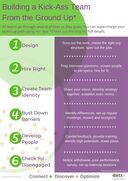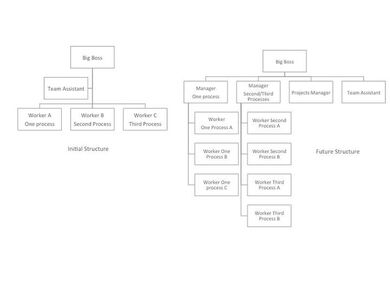Will Your Team Follow YOU?Updated April 2020
“Let’s play follow the leader Nanni,” my 3-year old grandson says, pulling on my hand. He leads me through the house, taking me downstairs and back upstairs. We crawl, we jump and we stand still; he laughs when I shadow him and is so delighted I’m following his lead. He then says, “Nanni its your turn to be the leader!” After much laughter, we fall into a heap on the couch. Fun and shenanigans like this make for some great memories. Too bad leading a team isn’t quite that straightforward – or is it?
0 Comments
Self-Doubt is DebilitatingTrue story - 20 years ago I didn’t feel worthy of a $25,000.00 salary!
After 9 years of raising our daughters, I began the difficult task to return to the workforce, was turned down for every job I applied to and told my skills were ‘out-of-date’. It felt horrible to be rejected, but what was worse was how I felt about myself. I remember sobbing to my husband ‘Who will ever pay ME $25,000 (the going rate) after being out of the workforce; all I am is a stay-at-home Mom!’ Oprah Says Everyone Has a CallingWhen talking about success, Oprah Winfrey said "Everybody has a calling. And your real job in life is to figure out as soon as possible what that is, who you were meant to be, and to begin to honor that in the best way possible for yourself."
So how do you do that? How to Avoid BurnoutChange can be a dirty word in many work environments today. Lets face it “Transformation” is the buzzword de jour! Almost everyone is feeling the affect of increased workload and the speed of change in their job.
It may be brought on from process improvement, new-fangled technologies to learn, added responsibility, regulatory scrutiny, or the most-feared-change of all…downsizing! Constantly having to adapt, even for the best leaders, takes quite a toll. As a leader not only do you have to continually reframe and communicate the gist of the changes to your team, but you are also expected to be ‘on’ and supportive of whatever is thrown your way. This can be downright exhausting! So how IS change affecting you? Are you coping? Or are you nearing burnout? Take this simple assessment to find out: Building A Kick-Ass Team is RewardingBuilding a kick-ass team is one of the most rewarding experiences for any leader. To see the team YOU established succeed and thrive creates a sense of pride and satisfaction like no other. Do you remember how it felt to be a part of an awesome team? You were in sync, you had fun, and you were an unstoppable machine. Everyone was connected and continuously driving in the same direction to get stuff done. This blog marks the beginning of a series of posts that will walk you through the full cycle of not only building a team, but also supercharging it! Today, we start from the beginning, which involves creating your vision, crafting roles and selecting the right members. Over the course of the next few months, I will address other topics such as the settling in period, navigating through difficult times, celebrating successes and preparing for transformative windups. The “Kick-Ass Team Building From the Ground Up” series will also include tons of practical tips and tricks for boosting your own leadership capabilities, so please follow along for full access to an abundance of insight and advice. Free Tip Sheet: Building a Kick-Ass Team From the Ground Up Without further ado, welcome to part one of our series – The Start Up Phase! There are countless reasons why you may be forming a new team right now. It may be the beginning of a new project or initiative, there may be an important new business direction underway and you have to pull a group together or you need to 'restructure' due to growth. Regardless of the reason behind the new team formation, here are your steps to get started: 1. White-Boarding Let me preface by stressing one thing – do not skip this step! Even if you’ve been handed a group of pre-selected individuals to begin with, I encourage all of my clients to start with a blank slate. Before you go sticking boxes on an org chart, ensure you are crystal clear on your own vision. Grab a whiteboard and begin considering these key questions:
Having this information readily available will assist you in figuring out which roles/functions are required on the team and what work you’ll be in charge of overall. It will also provide a basis to review the team’s progress once set up. 2. Suss Out The Work When beginning to build a team, it’s common for leaders to immediately think about managers – how many they need, who they will be etc. But there is a major drawback to this approach. What tends to happen is teams end up with too many people trying to lead without clear and distinct accountabilities – and you know what they say about too many cooks in the kitchen! Instead of beginning with management, I say do a bottom-up build! Start with considering the day-to-day work of your team and allow your structure to develop according to what actually needs to get done, not how many departments you want. In order to ensure you stack your structure with the right number and level of roles, consider these questions first to group like-functions:
Your answers to the questions above should start to create a picture of how many people you really need to DO the day-to-day work? And in contrast, how many managers are actually required to manage the people doing day-to-day work. If you can, quantify the output that will be delivered – you may have to make a few assumptions at this point – and think about the ROI (return on investment) of your resources. You tend to get bigger return with ‘doers’ than with ‘managers’. Here are some common pitfalls that many leaders face during this step of a new team formation:
3. Map Your Structure - Org Design This is when you get to move the boxes around. A good organizational design drives efficiency and success. When creating an organizational structure, I recommend an accountability-based approach – that establishes a hierarchy with clarity built-in so everyone will know who is on the hook for what. Clear accountability is a critical success factor for a smooth running team. Also vital, yet sadly overlooked, is ensuring that each Manager fully understands that their responsibility includes the development of all team members, not just direct reports. This includes formalized succession planning for managers to have replacement plans for their own roles – setting this up in the beginning will make your job a whole lot easier. Now layout a future focused org structure identifying how each role reports. Every role on the org chart needs a unique and clearly defined accountability in order to reduce confusion and improve self-sufficiency. Notice we haven’t talked about the people yet? This is done on purpose. Million Dollar Tip: Never design your structure around your people. Big mistake! (Send me a message if you want to know why) Here is an example of how you might divide work initially in order to support your longer-term structure to ramp up staffing over time: Org Design ExampleOrg structures do naturally evolve as changes are introduced over time. By developing a future plan from the outset with a ‘target’ operating model (future structure) you have a tool to not only aid in the hiring/selection process, but assess potential talent to grow and develop into expanded roles. 4. Spec Your Jobs I know this may seem tedious, but believe me, this is worth the investment! Not only will this step get you thinking about what work is needed to be done and the talent you will need, but also the document you create will serve multiple purposes over the life cycle of the team (e.g. sourcing new hires, evaluating compensation, performance management). Each role needs its own job spec - a profile. Here is a free template you can use, with a filled in example of a completed one for you to reference. Consider all the elements - similar to a job posting you would need - which details the skills necessary, the type of characteristics required to be successful and the education or knowledge which is a must or nice to have in each job. If you’ve never done this before, you can cheat by ‘Googling’ similar jobs and reviewing postings for relevant content. They will give you a clue for the type of jobs in the market (no one I know ever got into trouble for using another job posting for inspiration). Just ensure your job spec thoroughly outlines the work duties, tasks, and responsibilities so that a potential employee has an idea of what they’ll be signing up for! 5. Pick Your Talent Finally, it’s time to talk about people. I could write a whole blog on just this step – I love selecting talent – but I’ll save that for another time! I’ll keep this section brief. If you already have a pool of people to select from, resist the temptation to simply slot in people you know in the boxes. Do yourself a favour and review them against the job spec for ‘fit’, and ask yourself if they are the right people to do the job. If not, you may need to post the role. This is the step where it really pays to have objective help in screening candidates and conducting interviews. Having someone to whittle the list of candidates down to a choice few will save you time – they can also be your point person to field follow up calls and emails. I highly recommend involving several people you trust in the interview stage to help you screen for ‘fit’. It’s important that anyone new joining the team or business matches both the style and organizational culture of the company. If you have management roles, start filling those first and perhaps have them join you in future interviews as you build out the team. Prepare a series of questions that will help you probe and qualify the candidates until you find the right people to fill your roles. I recommend considering the use of a comprehensive assessment tool that can give yet another dimension about fit to the team and clues for how best to manage and communicate moving forward. Dots Leadership Solutions can assist you with crafting your structure, developing job specs, preparing your selection strategy and even screening, assessing and interviewing candidates – it’s kind of our ‘thing’. Reach out today and let’s chat about the next team you’re building. Summary: Team Start Up PhaseConclusion of the Start Up Phase:
'Building a Kick-Ass Team from the ground up' series Part 2 – Team Identity |
Most Popular Posts:
AuthorElaine Adamson is a leadership consultant with Dots Leadership Solutions Inc. A natural dot connector. Passionate about coaching team effectiveness and leadership development she shares over 25+ years of real-life tips and tricks that really work! 
Elaine believes you can discover and leverage strengths to forge a strong team dynamic despite business challenges or organizational change.
She posts some great articles on Linked In too! Topics of Interest
All
Archives By Date
November 2022
|
Specialties |
Company |
|








 RSS Feed
RSS Feed